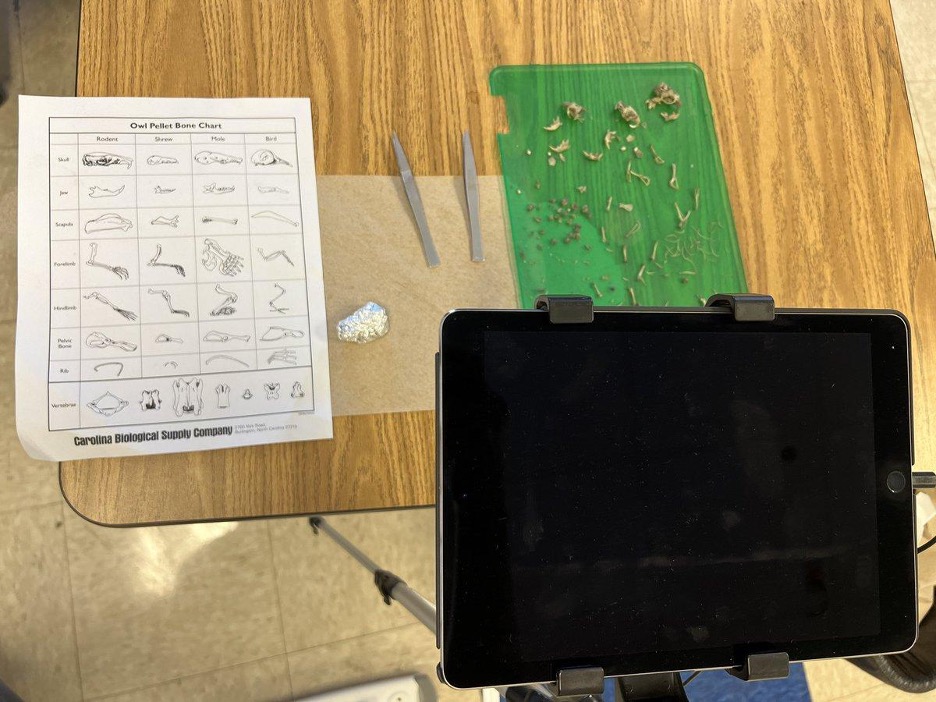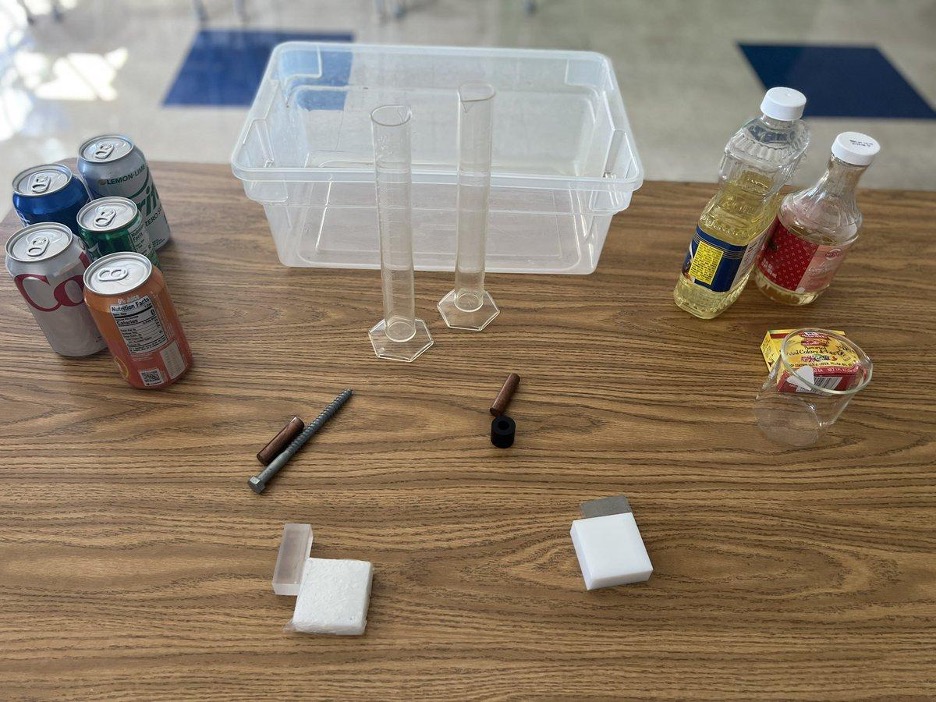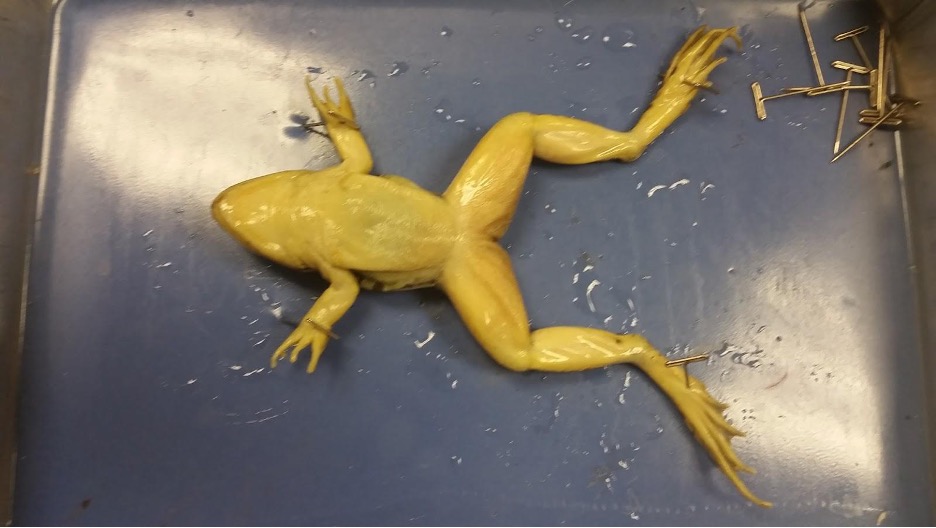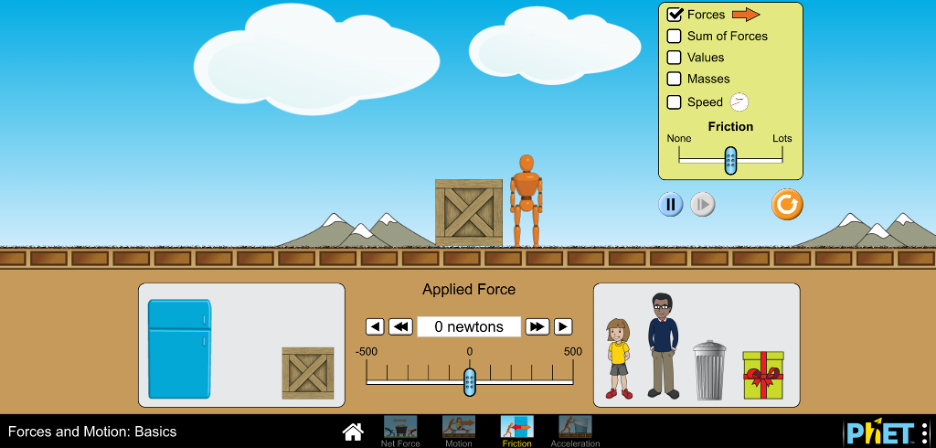
Students in an online environment may have a disconnection between their classmates and teachers (Gray & DiLoreto, 2016), leading to a perception of dissimilar experiences compared to students in a face-to-face classroom. Korpershoek et al. (2020) meta-analysis discovered that the sense of belonging correlates to student motivation and engagement. One method that educators can use to improve motivation and engagement in their classrooms is by performing demonstrations (Basheer et al., 2017; Milne et al., 2007). Demonstrations can be achieved in various classes but are most common in science classrooms. There are multiple benefits of demonstrating in science; such as improving participation, initiating inquiry, and producing a sense of community through a shared experience (Meyer et al., 2003).
According to Basheer et al. (2017), the most prevalent type of demonstration is an experiment, which improves student comprehension of the science topic. In a face-to-face environment, teachers begin class by standing in front of the room to exhibit a science experiment while students watch and think about the events. Teachers provoke interest through questions, and then students analyze the steps and product of the demonstration.
The captivating “wow” of a demonstration can be performed similarly with online students. Students can participate in a synchronous online demonstration through a video conferencing platform, e.g., Google Meeting, Zoom, etc. (Wright, 2021). Students benefit by seeing teacher and student reactions in a synchronous online learning environment.
Conducting online demonstrations offers numerous advantages across various education levels. Ensuring student engagement throughout a unit is paramount to effective learning. Beyond that, demonstrations provide invaluable insights into applying scientific principles in real-life situations. Online demonstrations show cause-and-effects of scientific phenomena or dissections. Dissections are valuable learning experiences because students can learn the anatomy of animals (Offner, 1993). Common issues with face-to-face class dissections are safety, costs, and a limited equipment supply (Meyer et al., 2003). Online dissections (prosections) eliminate those issues while delivering the same content to students. Moreover, online demonstrations allow students to hone their observation and critical thinking skills while learning the desired content.
Teachers can also add an online simulation to their instruction as a follow-up to a demonstration. Online simulators, such as Gizmos and PhET, provide students with a first-person experience of science phenomena. Active participation using simulators allows students to experience learning, which aligns with Kolb’s (1984) Experiential Learning theory. Utilizing online demonstrations with simulators can give students an in-depth understanding of science content in an online learning environment.
Strategy Implementation
Online demonstrations can be performed in various environments. Instructors will want to find a surface, such as a desk or a kitchen table, that allows for setup and movement. It is essential to prepare for demonstrations by collecting or purchasing the required supplies so they are ready to be on camera (e.g., a sheep brain from an online distributor). Additionally, educators should follow the same safety requirements that would occur in a classroom setting (Artifact 1). Not only will this protect the demonstrator, but following safety guidelines is a teaching opportunity to explain the importance of personal protective equipment (PPE).
Artifact 1

The next step is to set up a camera to live stream in the online conferencing platform. A preference is to utilize a tripod with a phone or tablet (Artifact 2). Preparing the camera setup beforehand will allow teachers to get the best angle for students to view the demonstration. Instructors should also sign into the video conferencing platform using a separate computer to answer chat questions and manage classroom behavior.
Artifact 2

When creating an online demonstration, students must be able to express their interests and questions—developing inquiry-based learning skills, which are valuable for analyzing and understanding (Pedaste et al., 2015). The awe and wow of the demonstration increase intrinsic motivation (Palmer, 2007). Throughout the experiment, teachers should consistently ask students questions to answer orally or in chat. Preparing a list of questions can help keep the class on track (e.g., what animal has a beak?). Students can also use a Generative Learning Process (e.g., worksheet, online notes, interactive whiteboard) to increase their understanding and actively participate in the lesson (Fiorella & Mayer, 2015, 2016).
Once the demonstration is complete, students should transfer their knowledge. This can occur by completing an assessment or by utilizing simulations. There are several tech tools for simulators, including Gizmos and PhET. Simulators will help to bridge the gap and make abstract concepts more concrete. Additionally, many tools have premade assignments that correspond with the activity, saving time for teachers to create materials (Artifact 3).
Artifact 3

The following examples occur in a virtual middle-level science class. The classes consisted of 20-30 students, and the instructor taught 4 classes daily. Students were actively engaged throughout each class and asked questions. In addition to positive feedback from students, many parents followed up with feedback indicating that their children were interested and engaged, and the lesson enhanced their understanding of the science topic. On one occasion, a student asked their parent to purchase the dissecting kit (owl pellet) so they could do it at home. Although these examples focus on biology, other sciences, such as chemistry or physics, can have similar scenarios and outcomes.
Example 1 – Chemistry Unit: Density Lab
Teachers would prepare for this activity by setting up beakers and a large tub of water (Artifact 4). Using various-shaped objects, students would hypothesize whether the objects would sink or flow. Then, the demonstrator would measure the mass and volume of each object and have students adjust their hypothesis. The demonstrator would drop the objects into the water to test whether they were sinking or floating, allowing time for suspense and questions.
During the activity, the instructor demonstrated the density of objects with the class and asked questions such as “Will this sink or float?” and “What is denser, object a or object b?” As an extension, teachers could set up a density column using different types of liquid, e.g., water, oil, and corn syrup.
Following the density demonstration, teachers can assign a simulation such as Explore Learning Gizmos’ “Density Laboratory,” which allows students to measure objects in a beaker and on a scale. The simulation will enable students to test whether objects sink or float in liquid. An editable assignment is linked to the activity to enhance understanding. Many objects in the simulation, e.g., a large boat or a planet, could not be demonstrated in a classroom.
Artifact 4

Example 2 – Biology Unit: Frog Dissection
Dissections are beneficial for students because they allow them to see the inner workings of a plant or animal. The frog dissection is a typical activity performed in the middle school science classroom while learning about the human body (Artifact 5). The demonstrator would prepare students by explaining the anatomy and physiology of the frog and how it is similar to a human body. Additionally, an explanation of how to cut and where to cut is essential in this activity.
Next, teachers would dissect in steps, leaving time for Q&A. Upon completing the dissection, teachers can assign questions or choose the preferred follow-up, which is an online simulation. Students who use virtual dissections and 3-D models can be equal to, or better than, students who perform in-person dissections (Ormandy et al., 2022). Multiple websites exist for simulations, including Gizmos from explorelearning.com (Gizmos, 2022). The websites allow students to go through the dissection steps at their own pace and label the parts of the frog.
Artifact 5

Example 3 – Physics Unit: Friction Demonstration
Friction is one of the most significant concepts students will learn throughout their physics education. Initially, students will grasp the fundamentals of how friction affects the motion of objects using their background knowledge and real-life experiences. As they progress in their physics course, they will delve deeper into its intricacies and implications. To begin the friction demonstration, the teacher will need to set up a basic ramp at an appropriate angle for a toy car to drive down smoothly. Next, gather three different surfaces such as cardboard, a piece of carpet square, and parchment paper. The teacher should take ample time to explain to students that each surface represents a different level of friction. The teacher will place each surface on the ramp one at a time, ensuring they cover the same area, and instruct students to observe the differences in speed as the car drives over each one. Students may also be instructed to collect data such as the time it takes for the car to complete its descent. This hands-on activity allows students to directly observe how friction influences the motion of objects and reinforces their understanding of the concept.
After completing the demonstration, teachers may choose to assign an accompanying task utilizing the PhET friction simulation (Artifact 6) to ensure that students fully comprehend the concept of friction. This simulation offers a comprehensive exploration as it enables students to manipulate several variables, including force, friction, and mass. The combination of an online teacher-led demonstration and a PhET simulation will enhance students’ understanding of how friction influences the behavior of objects.
Artifact 6

Results
Demonstrations and simulations can be utilized in multiple content areas to engage students and help them further understand abstract concepts. Students have consistently expressed how beneficial they find them in grasping scientific concepts. These activities enhance the enjoyment of classes while ensuring that the information I impart is memorable for students to retain what they have learned. Conducting demonstrations at the outset of a unit effectively captivates student interest and utilizing them throughout the unit or nearing the conclusion serves to solidify comprehension. Lastly, I have found that students feel comfortable asking questions and seeking to rectify misunderstandings during demonstrations or simulations.
Scholarly Reference(s)
- Basheer, A., Hugerat, M., Kortam, N., & Hofstein, A. (2017). The effectiveness of teachers’ use of demonstrations for enhancing students’ understanding of and attitudes to learning the oxidation-reduction concept. Eurasia Journal of Mathematics, Science and Technology Education, 13(3), 555–570. https://doi.org/10.12973/eurasia.2017.00632a
- Fiorella, L., & Mayer, R. E. (2015). Learning as a generative activity: Eight learning strategies that promote understanding. Cambridge University Press. https://doi.org/10.1017/CBO9781107707085
- Fiorella, L., & Mayer, R. E. (2016). Eight ways to promote generative learning. Educational Psychology Review, 28, 717–741. https://doi.org/10.1007/s10648-015-9348-9
- Gizmos. (2022, August 29). Gizmos explore learning. From https://gizmos.explorelearning.com/
- Gray, J. A., & DiLoreto, M. (2016). The effects of student engagement, student satisfaction, and perceived learning in online learning environments. International Journal of Educational Leadership Preparation, 11(1).
- Kolb, D.A. (1984). Experiential learning: Experience as a source of learning and development. Englewood Cliffs, NJ: Prentice-Hall.
- Korpershoek, H., Canrinus, E. T., Fokkens-Bruinsma, M., & de Boer, H. (2020). The relationships between school belonging and students’ motivational, social-emotional, behavioural, and academic outcomes in secondary education: a meta-analytic review. Research Papers in Education, 35(6), 641–680. https://doi.org/10.1080/02671522.2019.1615116
- Meyer, L.S., Panee, D., Schmidt, S., & Nozawa, F. (2003). Using demonstrations to promote student comprehension in chemistry. Journal of Chemical Education, 80(4), 431–. https://doi.org/10.1021/ed080p431
- Milne, C., & Otieno, T. (2007). Understanding engagement: Science demonstrations and emotional energy. Science Education (Salem, Mass.), 91(4), 523–553. https://doi.org/10.1002/sce.20203
- Offner, S. (1993). The importance of dissection in biology teaching. The American Biology Teacher, 55(3), 147–149. https://doi.org/10.2307/4449611
- Ormandy, E., Schwab, J. C., Suiter, S., Green, N., Oakley, J., Osenkowski, P., & Sumner, C. (2022). Animal dissection vs. non-animal teaching methods. American Biology Teacher, 84(7), 399–404. https://doi.org/10.1525/abt.2022.84.7.399
- Palmer, D. (2007). What is the best way to motivate students in science? Teaching Science, 53(1), 38–42.
- Pedaste, M., Mäeots, M., Siiman, L. A., de Jong, T., van Riesen, S. A. N., Kamp, E. T., Manoli, C. C., Zacharia, Z. C., & Tsourlidaki, E. (2015). Phases of inquiry-based learning: Definitions and the inquiry cycle. Educational Research Review, 14, 47–61. https://doi.org/10.1016/j.edurev.2015.02.003
- Wright, D. (2021). Engaging students in online learning using teacher demonstration. Science Scope (Washington, D.C.), 44(3), 65–69.
Citation
McKenzie, M., McKenzie, A. (2024). Enhancing Experience through the Integration of Demonstrations and Simulations. In deNoyelles, A., Bauer, S., & Wyatt, S. (Eds.), Teaching Online Pedagogical Repository. Orlando, FL: University of Central Florida Center for Distributed Learning.